There’s a new way to explore Mozambique’s best-loved holiday coastline: by fatbike! How does a novice cyclist fare on the first-ever tour?
Also read: how to have the perfect day in Ponta do Ouro.
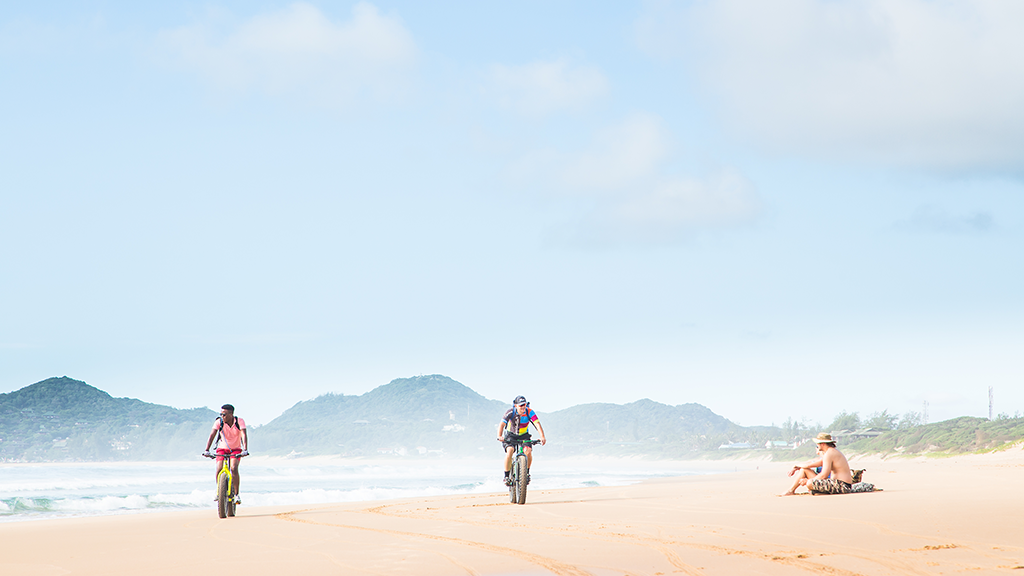
Passing holidaymakers en route to Ponta Malongane. Photo by Tyson Jopson.
I recently learnt to ride a bike and like anybody with a new skill, I wanted more. I was longing to pedal somewhere far, far away. That’s how I found myself heading for the Kosi Bay in a Mercedes Sprinter with 15 other ‘real’ mountain bikers.
Just to give you an idea of some of the company I was keeping: on the seat behind me was Ride Magazine Editor Tim Brink and behind him was Julian Bryant, both of whom have done the Cape Epic more than once. Beside me was show-off cyclist and Getaway Deputy Editor Tyson Jopson, who had been giving me riding lessons and often effortlessly popped a wheelie as I was pleading with the bike to just move forward. Upfront was Rohan Surridge, the leader and organiser of this first-ever four-day fat bike tour along the beaches of Southern Mozambique. And then there was me, proud finisher of three laps of the Sea Point promenade.
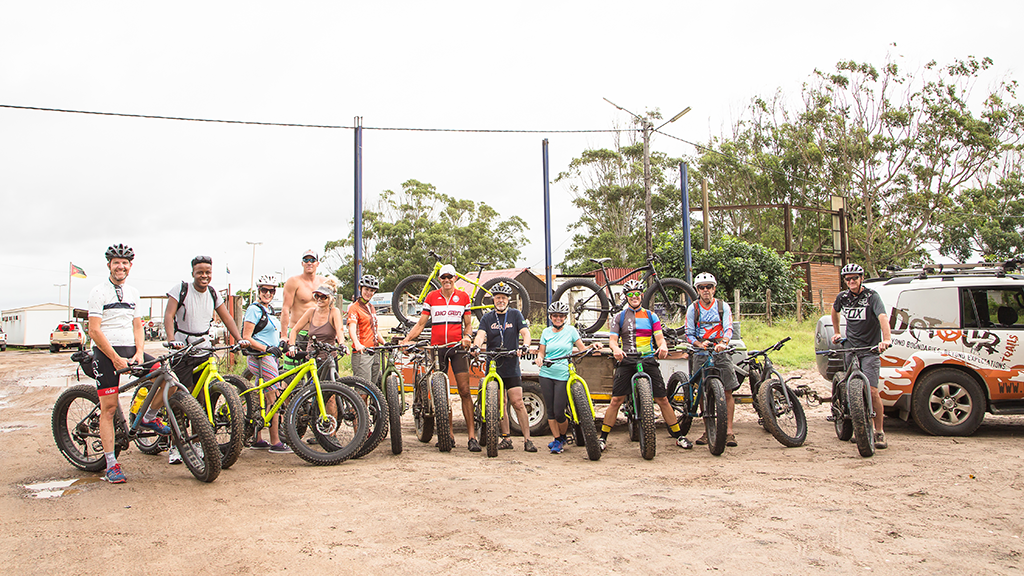
Team photo at the Kosi Bay Border. Photo by Tyson Jopson.
At the back of the bus were two glimmers of hope: Allison and Mervyn Gans, an older retired couple. They spend their time trying out new cycling routes and tours. Allison arrived wearing a T-shirt printed with ‘I love bicycles’. At the Kosi Bay border we were joined by bona fide wild man Andy Coetzee, fly-fishing expert and presenter of National Geographic’s Caught on Safari: Live.
We unloaded the bikes on Mozambican soil and set off for Ponta do Ouro. Ahead of us was a 15-kilometre undulating sand track stretched east towards to the coast. It had rained the previous night so there were deep puddles. It was at this point that I felt I should inform everyone that I was new to cycling, to minimise potential embarrassment ahead.
I’m glad I did. Because things got tough, and quickly. The difference between riding in sand and riding on the promenade, I discovered, is that on the sand, the bicycle moves forward with each pedal stroke. There was no coasting like I did on the promenade pavement. It was pedalling all the way. Andy and Rohan dropped back to give me advice and encouragement, and I eventually got into a bit of a groove. We soon reached our first stop: a small shebeen on the roadside. I never knew, until then, how a cold 2M beer could soothe one’s soul after a hard afternoon of toiling in the sun. We picked up our bikes and continued towards Ponta.
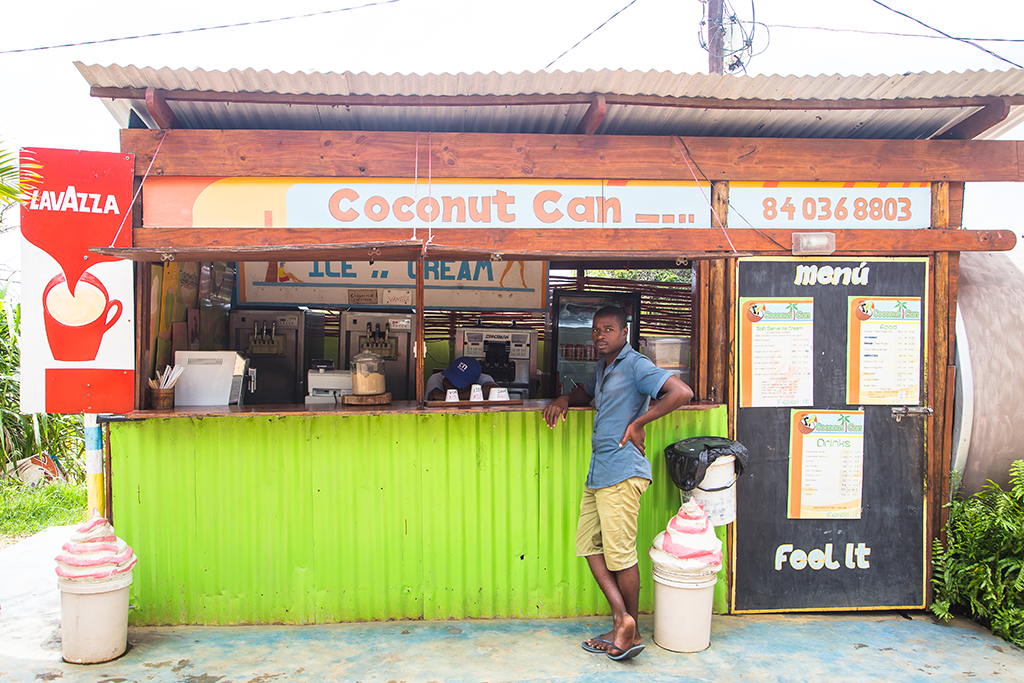
The coconut ice-cream stall on the main road in Ponta do Ouro. Photo by Welcome Lishivha.
Children in uniform on the side of the gravel road started cheering us on like we were in the Tour de France, except I was lagging behind. Anxiety kicked in at the thought of not living up to the Usain Bolt/Serena Williams status of pioneering black athletes. Thinking that I didn’t want to be the guy these children would grow up trying to not be, I began cycling furiously.
I wanted to stop and scream back at them, ‘This is for fun, people! No one is going to win anything at the end of this. I promise!’ But I had already made the first mistake of cycling furiously on a harder gear as I was approaching a hill. There was no fighting anymore – it was time to get off my bike and be the black guy pushing his bike while all the white people cycled ahead. A roar of laughter erupted from a group of women on the side of the road as I got off the bike, and with my head hanging down, I pushed my bike uphill.
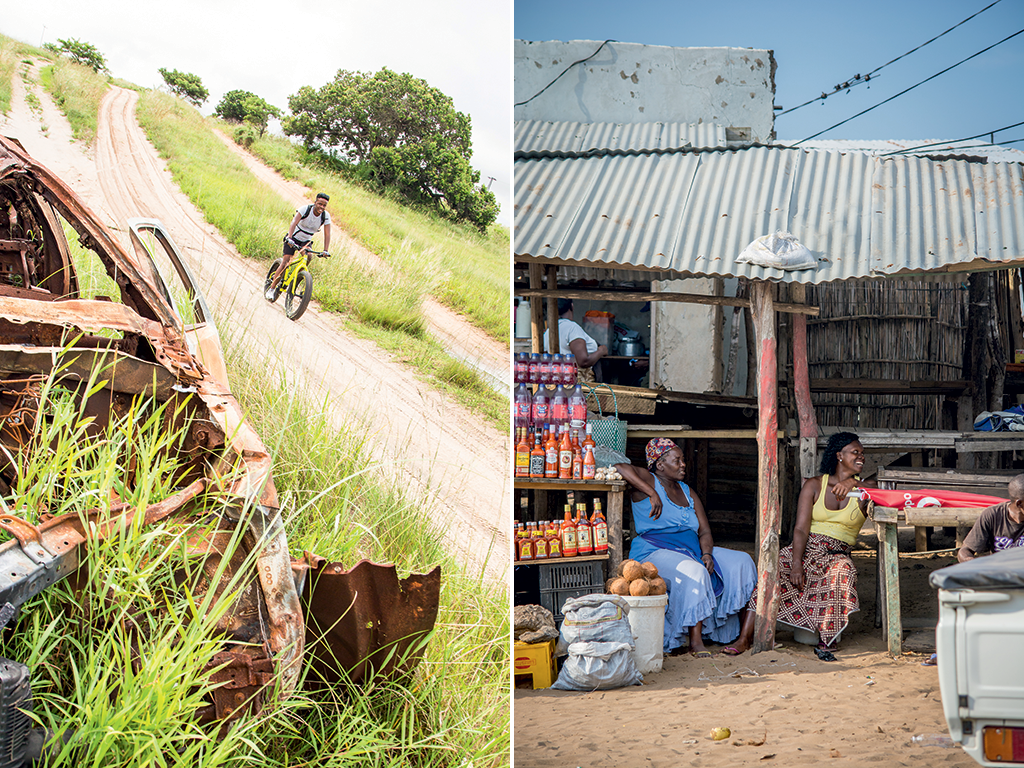
LEFT: I cycled past rusted old cars and abandoned houses on the road from the Kosi Bay border to the coast. Photo by Tyson Jopson. RIGHT: Market stalls line the road into Ponta do Ouro, where you could buy anything from coconuts to medicine. Photo by Melanie Van Zyl.
We entered Ponta do Ouro via the main drag, with villagers on the side of the road selling anything from a kaleidoscope of African-print clothes and sculptures to fruit and vegetables stacked on the ground. Signs offered curry, cocktails and beer. Tempting, but we pushed on to Kaya Kweru, next to the beach, where we’d be spending the night. We immediately ordered beers, dived into the pool and, despite 15 kilometres in the saddle, felt thoroughly refreshed. Later on, at the Love Café, I rewarded myself even further with prawn curry, for dinner.
When I woke the next day, except for a sore bum, my body felt surprisingly lighter and I was ready for the day ahead: we’d be heading out to cycle on the beach, where our fatbikes would be in their element. We cycled along the golden sand past plenty of fishermen. At Ponta Malongane we stopped for the requisite 2M beer before the pull of the blue ocean got too strong and we abandoned the bikes to go for a snorkel. Later, we saw hundreds of crabs dancing between the sea and the shore, digging up holes that were then washed over by the waves. That day we covered about 20 kilometres, stopping often to swim, drink beer and enjoy the scenery. The high golden dunes garnished with flora and patches of the coastal forest make the coastline here a stunning show-off.
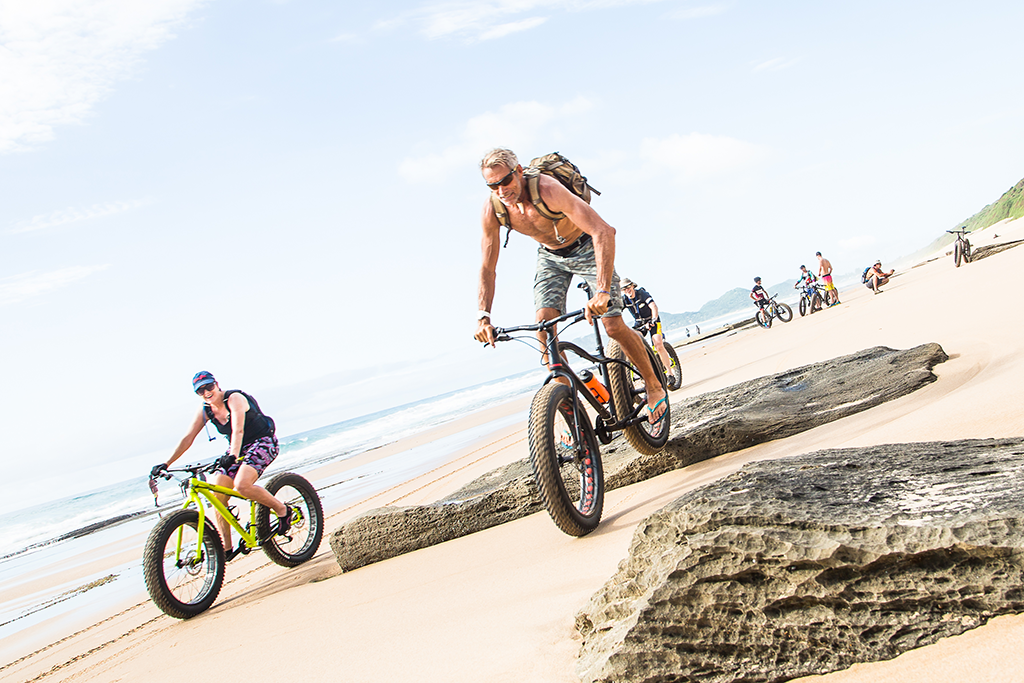
Allison Gans and Andy Coetzee, old childhood friends, dice down the beach. Photo by Tyson Jopson.
We arrived at Coral Bay Camping at Techobanine around 14:00, in time for lunch. In the spirit of embracing local traditions, I decided to try Mozambique’s famous peri-peri sauce. To my dismay, I learnt the hot way that some experiences are better off left to the natives; that lemon, not a cold grape, cures the sting of peri-peri on your lips; and that it’s generally not a good idea to eat chillies if your bum has been in the saddle for over 40 kilometres.
On day three, we did a short cycle along the beach before reaching a staircase into the nearby forest. We slogged and pushed our bikes up the stairs, and were rewarded with a wonderful panoramic view of the ocean at the top. Then we cycled away from the coast, through the forest towards Piti Lake, neighbouring the Maputo Elephant Nature Reserve. Andy told us about the annual migration of over 3000 elephants from the Tembe Elephant Park in South Africa. We finished cycling around midday, went for a beachcombing stroll and watched Andy’s twin brother, Mark, cast his fishing line into the ocean.
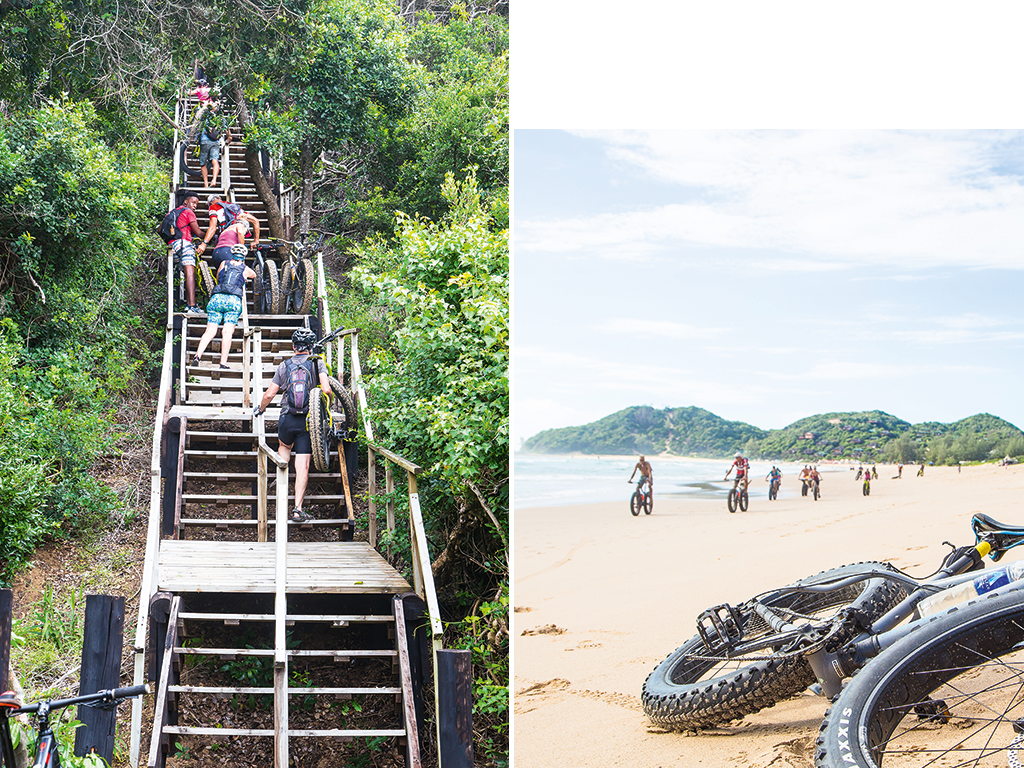
LEFT: there’s no riding up stairs, alas. RIGHT: Bikes get dumped on the sand when the ocean beckons. This was on the stretch to Ponta Malongane. Photos by Tyson Jopson.
That evening we sat around the fire, waves splashing in the background, the aroma of steak sizzling on the braai, and reminisced and laughed about our journey. On this final night, Andy took us for a walk along the beach – these unspoilt sands are prime turtle-nesting territory. It wasn’t the right time of year to see turtles but the night walk was worth it. All I could hear was the magical symphony of splashing waves and the clicks of the crabs playing hide and seek with the wave crests.
The next day we caught a taxi back to the border; I was encouraged to see that the taxi struggled as much as I had along the bumpy route into Ponta do Ouro.
Yes, I may have falsely overstated my fitness level and was saved further embarrassment by the fact that there was no medal at the finish line. However, the medal that I’m now clutching dearly against my heart with fondness is the memory of the idyllic scenery: golden sand, ocean and occasional forests; the fact that we often had it almost all to ourselves; the moments of camaraderie and encouragement I received as a novice.
These are the moments that are urging my return, like a turtle, to the blissful sands of Southern Mozambique.
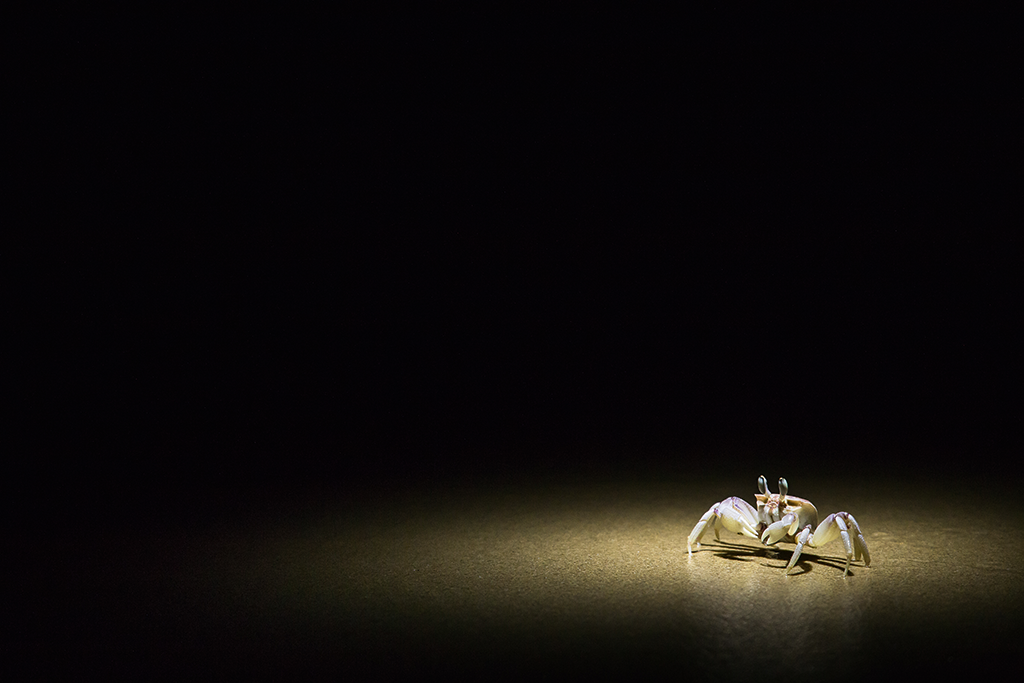
We found this crab – and plenty more – on the night we went hunting for turtle nests. Photo by Tyson Jopson.
Plan your trip
Getting there
Mango flies to Durban from Joburg for about R1300 return, and from Cape Town for about R2000 return. flymango.com. Transfers from Durban (with Detour Trails) to the Kosi Bay/Farazela border (seven hours’ drive) cost R750 per person return.
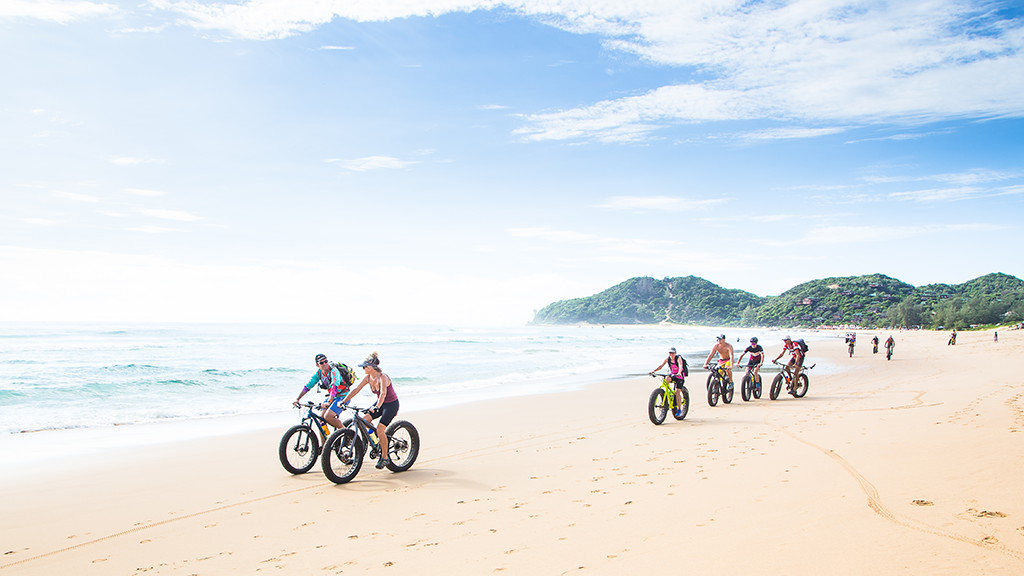
Cycling along the coast. Photo by Tyson Jopson.
The tour
Detour Trails’ Maputaland Amble is 80 kilometres of fatbiking over four days. We were on the maiden recce, so only rode the outbound route (three days). Details have also changed slightly – now Tartaruga Maritima luxury tented camp in Ponta Malongane is the base, and there is only a stop in Ponta do Ouro for lunch. It also includes a boat trip to see dolphins, a night cycle and heads further north along the beach from Ponta Techobanine. The next tour is scheduled for 17 – 20 November (turtle-nesting season on this coastline). detourtrails.co.za.
There is plenty of flexibility based on people’s interests and the group dynamic. If you have a specific location in mind, or cycling abilities you’d like catered for, Rohan is happy to advise and tweak.
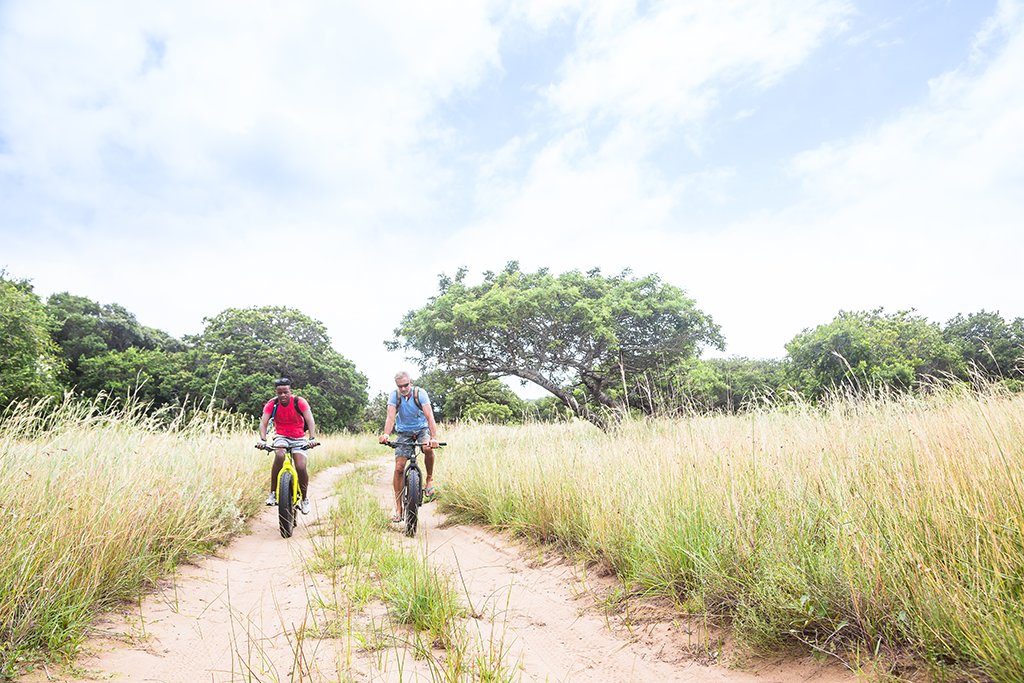
Cycling alongside Andy Coetzee, this was just after he’d offered to tow me with a bungee rope. Photo by Tyson Jopson.
Tour costs
It costs R10500 per person, including three nights’ accommodation, breakfast each day, two dinners and one lunch (the rest of the meals are at restaurants for your own account). Basic trail snacks, water and support crew are provided during the rides. The price includes the boat trip and taxi back to the border. It does not include compulsory emergency evacuation insurance (about R500 per person), personal beverages, eating out and transfers in SA to/from the Kosi Bay border. Fat-bike rental costs R600 per day (helmet R25 per day), or you can bring your own bike.
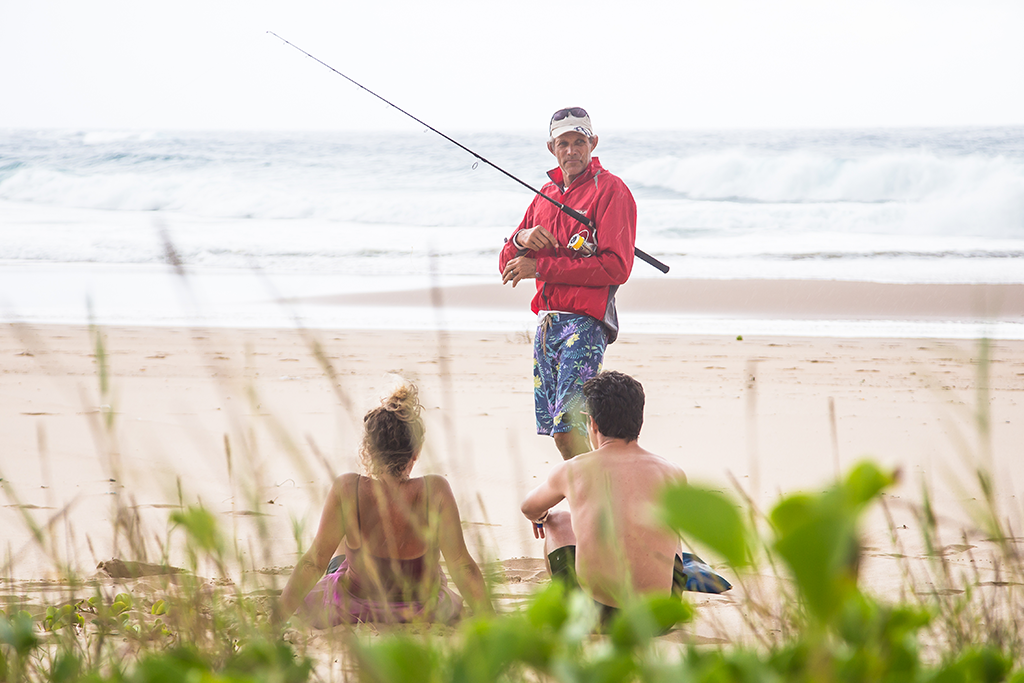
Mark Coetzee loves fishing but he didn’t catch much. Photo by Welcome Lishivha.
Need to know
The daily cycling distances were manageable, even for a novice like myself, but a basic level of fitness will make it more enjoyable. Bring your choice of cycling gear: padded shorts, cycling gloves, helmet (or peak cap) and cycle-friendly shoes with grip are all advisable. Also a two-litre hydration bladder, sunglasses and sunscreen. Don’t forget your snorkelling gear, swimming cozzie and towel. South Africans do not require a visa to visit Mozambique.
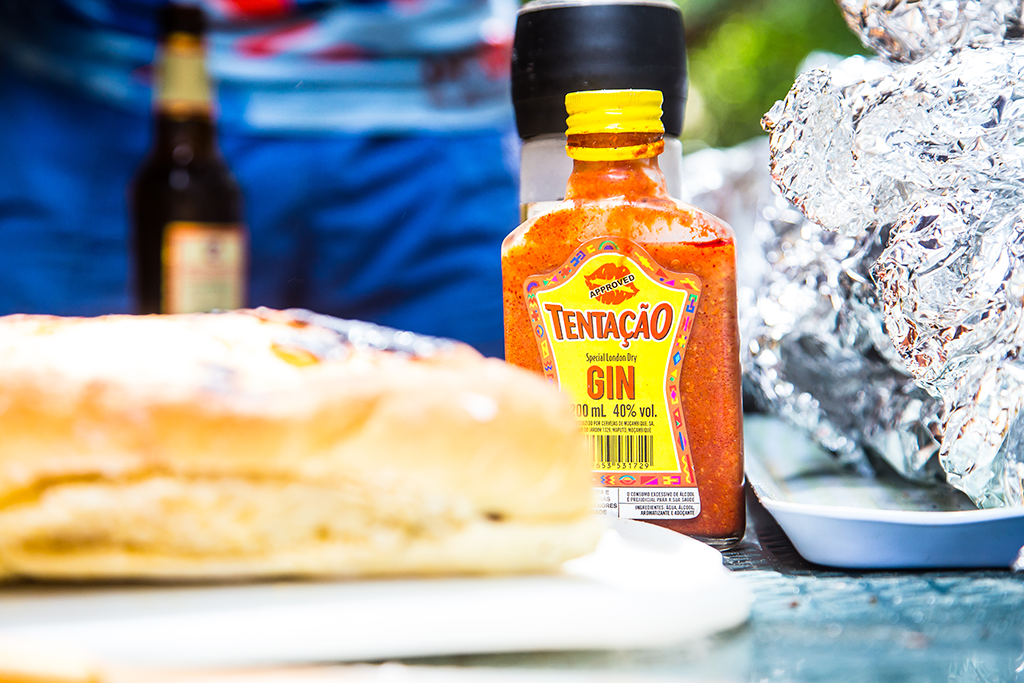
Not what the label says: the local peri-peri sauce is sold alongside Tentacao Gin and other bottles at street stalls. Photo by Tyson Jopson.
Do this
Eat peri-peri chicken at Sunset Shack (+258842756746) or Jillie’s Chicken in Ponta Malongane. Find other traditional local foods at the back of the market.
Go bar hopping along the beach – there are at least four options, all similarly laid-back. Treat yourself to pasteis de nata or one of the other delicious treats at the Doce Vitória bakery in Ponta do Ouro. Tel +258843019387
Chill at Ponta Beach Bar, next to the sea in Ponta do Ouro. Great any time of day, for cocktails, beers, burgers and pizza. We had breakfast, but now the tour stops here for lunch. Tel +258843988364
Read the story in the August 2017 issue of Getaway magazine.
Get this issue →
Our August issue features 14 Northern Cape treasures, a trip along Mozambique’s pristine beaches on a fat-bike, holidays to take if you want to learn a new skill and so much more.
You may also like
Related Posts
Whether you're heading to Durban, Gauteng and Cape Town or the Garden Route, there's lots...
read more
In the midst of one of Australia's most drastic heatwaves yet, both locals and animals...
read more
In January, four South Africans set out from Cairo on their heavily-laden bikes to get...
read more